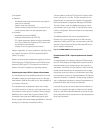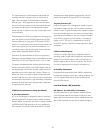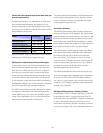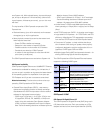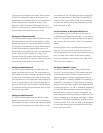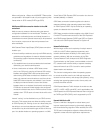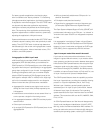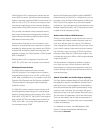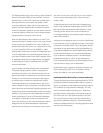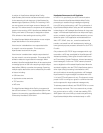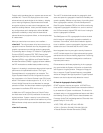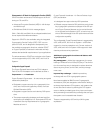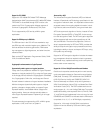For latency sensitive applications, the blocking algo-
rithm is modifi ed to be “latency sensitive.” For streaming
(throughput sensitive) applications, the blocking algorithm
is adjusted to maximize throughput. The z/OS TCP/IP stack
can dynamically detect the application requirements,
making the necessary adjustments to the blocking algo-
rithm. The monitoring of the application and the blocking
algorithm adjustments are made in real-time, dynamically
adjusting the application’s LAN performance.
System administrators can authorize the z/OS TCP/IP stack
to enable a dynamic setting, which was previously a static
setting. The z/OS TCP/IP stack is able to help determine
the best setting for the current running application, based
on system confi guration, inbound workload volume, CPU
utilization, and traffi c patterns.
Link aggregation for z/VM in Layer 2 mode
z/VM Virtual Switch-controlled (VSWITCH-controlled) link
aggregation (IEEE 802.3ad) allows you to dedicate an
OSA-Express2 (or OSA-Express3) port to the z/VM operat-
ing system when the port is participating in an aggregated
group when confi gured in Layer 2 mode. Link aggregation
(trunking) is designed to allow you to combine multiple
physical OSA-Express3 and OSA-Express2 ports (of the
same type for example 1GbE or 10GbE) into a single logi-
cal link for increased throughput and for non-disruptive
failover in the event that a port becomes unavailable.
• Aggregated link viewed as one logical trunk and con-
taining all of the Virtual LANs (VLANs) required by the
LAN segment
• Load balance communications across several links in a
trunk to prevent a single link from being overrun
• Link aggregation between a VSWITCH and the physical
network switch
• Point-to-point connections
• Up to eight OSA-Express3 or OSA-Express2 ports in one
aggregated link
• Ability to dynamically add/remove OSA ports for “on
demand” bandwidth
• Full-duplex mode (send and receive)
• Target links for aggregation must be of the same type
(for example, Gigabit Ethernet to Gigabit Ethernet)
The Open Systems Adapter/Support Facility (OSA/SF) will
provide status information on an OSA port – its “shared” or
“exclusive use” state. OSA/SF is an integrated component
of z/VM.
Link aggregation is exclusive to System z10 and System
z9, is applicable to the OSA-Express3 and OSA-Express2
features in Layer 2 mode when confi gured as CHPID type
OSD (QDIO), and is supported by z/VM 5.3 and later.
Layer 2 transport mode: When would it be used?
If you have an environment with an abundance of Linux
images in a guest LAN environment, or you need to defi ne
router guests to provide the connection between these guest
LANs and the OSA-Express3 features, then using the Layer
2 transport mode may be the solution. If you have Internet-
work Packet Exchange (IPX), NetBIOS, and SNA protocols,
in addition to Internet Protocol Version 4 (IPv4) and IPv6, use
of Layer 2 could provide “protocol independence.”
The OSA-Express3 features have the capability to perform
like Layer 2 type devices, providing the capability of being
protocol- or Layer-3-independent (that is, not IP-only).
With
the Layer 2 interface, packet forwarding decisions
are based
upon Link Layer (Layer 2) information, instead
of Network
Layer (Layer 3) information. Each operating
system attached
to the Layer 2 interface uses its own MAC
address. This means the traffi c can be IPX, NetBIOS, SNA,
IPv4, or IPv6.
An OSA-Express3 feature can fi lter inbound datagrams by
Virtual Local Area Network identifi cation (VLAN ID, IEEE
802.1q), and/or the Ethernet destination MAC address. Fil-
tering can reduce the amount of inbound traffi c being pro-
cessed by the operating system, reducing CPU utilization.
29





